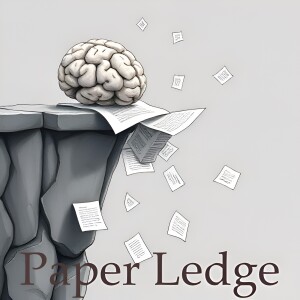
- Podcast Features
-
Monetization
-
Ads Marketplace
Join Ads Marketplace to earn through podcast sponsorships.
-
PodAds
Manage your ads with dynamic ad insertion capability.
-
Apple Podcasts Subscriptions Integration
Monetize with Apple Podcasts Subscriptions via Podbean.
-
Live Streaming
Earn rewards and recurring income from Fan Club membership.
-
Ads Marketplace
- Podbean App
-
Help and Support
-
Help Center
Get the answers and support you need.
-
Podbean Academy
Resources and guides to launch, grow, and monetize podcast.
-
Podbean Blog
Stay updated with the latest podcasting tips and trends.
-
What’s New
Check out our newest and recently released features!
-
Podcasting Smarter
Podcast interviews, best practices, and helpful tips.
-
Help Center
-
Popular Topics
-
How to Start a Podcast
The step-by-step guide to start your own podcast.
-
How to Start a Live Podcast
Create the best live podcast and engage your audience.
-
How to Monetize a Podcast
Tips on making the decision to monetize your podcast.
-
How to Promote Your Podcast
The best ways to get more eyes and ears on your podcast.
-
Podcast Advertising 101
Everything you need to know about podcast advertising.
-
Mobile Podcast Recording Guide
The ultimate guide to recording a podcast on your phone.
-
How to Use Group Recording
Steps to set up and use group recording in the Podbean app.
-
How to Start a Podcast
-
Podcasting
- Podcast Features
-
Monetization
-
Ads Marketplace
Join Ads Marketplace to earn through podcast sponsorships.
-
PodAds
Manage your ads with dynamic ad insertion capability.
-
Apple Podcasts Subscriptions Integration
Monetize with Apple Podcasts Subscriptions via Podbean.
-
Live Streaming
Earn rewards and recurring income from Fan Club membership.
-
Ads Marketplace
- Podbean App
- Advertisers
- Enterprise
- Pricing
-
Resources
-
Help and Support
-
Help Center
Get the answers and support you need.
-
Podbean Academy
Resources and guides to launch, grow, and monetize podcast.
-
Podbean Blog
Stay updated with the latest podcasting tips and trends.
-
What’s New
Check out our newest and recently released features!
-
Podcasting Smarter
Podcast interviews, best practices, and helpful tips.
-
Help Center
-
Popular Topics
-
How to Start a Podcast
The step-by-step guide to start your own podcast.
-
How to Start a Live Podcast
Create the best live podcast and engage your audience.
-
How to Monetize a Podcast
Tips on making the decision to monetize your podcast.
-
How to Promote Your Podcast
The best ways to get more eyes and ears on your podcast.
-
Podcast Advertising 101
Everything you need to know about podcast advertising.
-
Mobile Podcast Recording Guide
The ultimate guide to recording a podcast on your phone.
-
How to Use Group Recording
Steps to set up and use group recording in the Podbean app.
-
How to Start a Podcast
-
Help and Support
- Discover

Computer Vision - MARS a Multimodal Alignment and Ranking System for Few-Shot Segmentation
Hey PaperLedge crew, Ernis here, ready to dive into another fascinating piece of research! Today, we're talking about something called "Few-Shot Segmentation," which, in plain English, is about teaching computers to identify objects in images, even when they've only seen a few examples. Think of it like showing a toddler three pictures of cats and then asking them to point out all the cats in a brand new picture. Tricky, right?
Now, the current methods for doing this have a problem: they mostly rely on visual similarity. If the new image of a cat looks similar to the ones the computer already knows, great! But what if the cat is in a weird pose, or the lighting is different? It struggles. It's like trying to recognize your friend only by their hairstyle – you might miss them if they get a haircut!
That's where this paper comes in. The researchers have developed something called MARS – and no, it's not about space exploration (though that would be cool too!). MARS is a clever "ranking system" that you can plug into existing AI models. Think of it as a super-smart editor that takes a bunch of potential object masks (outlines of where the computer thinks the object might be) and then chooses the best ones. It's like having a team of detectives, each giving their opinion on where the clues are, and MARS is the lead detective who decides which clues are most promising.
So, how does MARS work? It looks beyond just visual similarity. It uses multimodal cues – basically, different kinds of information. The paper breaks this down into local and global levels. It's like not just looking at the color of the cat's fur (local) but also the overall scene – is it indoors, outdoors, is it a pet or a wild animal (global)?
Here is a breakdown of the process:
- Step 1: The computer generates a bunch of possible masks for the object in the image (the "proposals").
- Step 2: MARS scores each of these masks based on the multimodal cues. This means it looks at both the small details (local) and the big picture (global).
- Step 3: MARS filters out the bad masks and merges the good ones to create a final, super-accurate mask.
The researchers tested MARS on several datasets with names like COCO-20i, Pascal-5i, and LVIS-92i. These datasets are like standardized tests for AI, allowing researchers to compare their methods fairly. The results? MARS significantly improved the accuracy of existing methods, achieving "state-of-the-art" results, which is a big deal in the AI world!
So, why does this matter? Well, few-shot segmentation has tons of potential applications:
- Medical Imaging: Imagine being able to quickly identify tumors in medical scans, even if you only have a few examples of what they look like.
- Autonomous Vehicles: Helping self-driving cars recognize objects on the road in different lighting conditions.
- Robotics: Enabling robots to learn about new objects quickly and interact with them effectively.
- Satellite Imagery: Identifying specific types of buildings or crops in satellite images, even if you have limited training data.
The fact that MARS can be easily added to existing systems is also a huge win. It's like finding a universal adapter that makes all your devices work better!
Quote: "Integrating all four scoring components is crucial for robust ranking, validating our contribution."
In conclusion, this paper is not just about making computers better at recognizing objects; it's about making AI more adaptable, efficient, and useful in a wide range of real-world applications.
Now, a few questions to ponder:
- Could MARS be adapted to work with other types of data, like audio or text?
- What are the ethical considerations of using AI to identify objects in images, especially in sensitive areas like surveillance?
- How can we ensure that these AI systems are fair and unbiased in their object recognition abilities?
That's all for this episode of PaperLedge! Keep learning, keep questioning, and I'll catch you next time!
Credit to Paper authors: Nico Catalano, Stefano Samele, Paolo Pertino, Matteo Matteucci
More Episodes
Create your
podcast in
minutes
- Full-featured podcast site
- Unlimited storage and bandwidth
- Comprehensive podcast stats
- Distribute to Apple Podcasts, Spotify, and more
- Make money with your podcast
It is Free
- Privacy Policy
- Cookie Policy
- Terms of Use
- Consent Preferences
- Copyright © 2015-2025 Podbean.com





